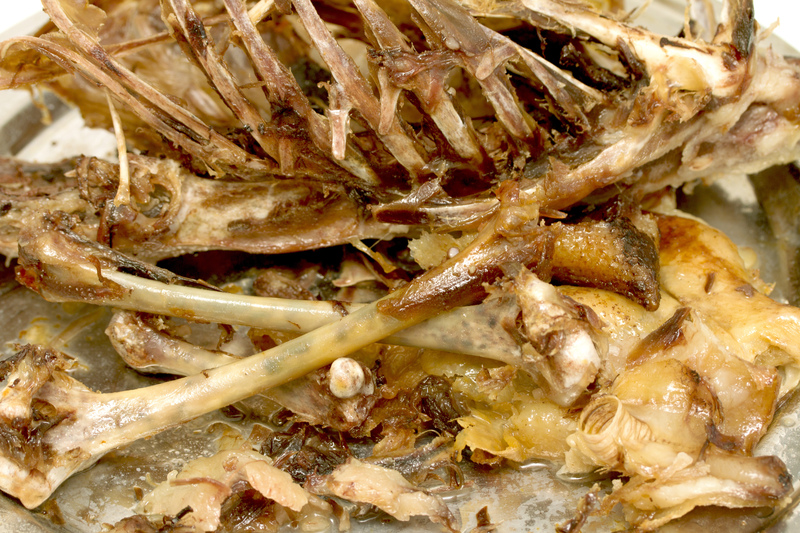Wood Waste Cleanup Tips
Posted on 27/08/2025
Understanding Wood Waste and Its Impact
Wood has always been a staple material in construction, furniture making, and various other industries. However, wood waste remains a significant challenge, resulting from these activities. It's essential to address wood waste effectively to minimize environmental impact and promote sustainability. Wood waste can include pallets, sawdust, off-cuts, and more. Proper cleanup and disposal ensure a safer environment and promote efficient resource use.

Effective Wood Waste Cleanup Tips
Cleaning up wood waste can be a daunting task, but with the right strategies and tools, it can be managed effectively. Here are some practical tips for efficient wood waste cleanup:
1. Segregate Wood Waste
The first step in wood waste cleanup is segregation. Identify different types of wood waste and categorize them accordingly. Separate treated wood from untreated wood, as treated wood may require special disposal methods due to chemicals used in the treatment process. Also, segregate reusable wood pieces from those that are not.
2. Reuse and Repurpose
Before disposing of wood waste, determine if any pieces can be reused or repurposed. Solid chunks of wood can be used for small projects or repairs. Pallets can be transformed into furniture or decorative items. Reusing wood not only reduces waste but also saves money.
3. Utilize Sawdust Wisely
Sawdust, often considered a nuisance, can have multiple uses. It can be used as a mulch for gardens, an absorbent for spills, or even a component in compost. Ensure that the sawdust from treated wood is disposed of correctly, as it may contain harmful chemicals.
4. Rent a Wood Chipper
For large-scale cleanups, renting a wood chipper can be highly effective. A wood chipper reduces large pieces of wood into smaller, manageable chips, which can be used as mulch, for landscaping, or for biomass energy production. It's a time-saving and efficient method for handling significant amounts of wood waste.
5. Proper Disposal of Treated Wood
Treated wood, such as that used in decking or fencing, contains chemicals that prevent decay but can be harmful to the environment. Treated wood should never be burned or used in compost. Instead, take it to facilities that handle hazardous waste or suggest proper disposal methods.
6. Partner with Recycling Centers
Many recycling centers accept wood waste. Partnering with these centers ensures that the wood waste is recycled appropriately. They might even offer drop-off or pickup services. Research local recycling centers to understand their requirements and policies on wood waste.
7. Efficient Container Use
Using the right containers for wood waste during cleanup can make the process more manageable. Opt for large bins or dumpsters that can handle the bulk of the waste. Make sure these containers are placed strategically to minimize the effort needed to move the waste.
8. Start a Compost Pile
Though wood takes longer to decompose, creating a compost pile with smaller wood pieces, sawdust, and organic waste can gradually turn into rich compost. This compost can be used in gardens to promote plant growth.
9. Educate and Involve Your Team
If working with a team, ensure everyone understands the importance of proper wood waste cleanup and disposal. Conduct training sessions to educate them about segregation, disposal methods, and the benefits of recycling wood waste.
Pros and Cons of Wood Waste Cleanup Methods
Understanding the pros and cons of different wood waste cleanup methods can help you choose the best strategy for your needs:
Pros
- Environmental Sustainability: Proper wood waste cleanup minimizes waste and promotes recycling, significantly reducing environmental impact.
- Cost-effective: Repurposing and recycling wood can save money on materials for new projects.
- Safety: Effective cleanup reduces risks of accidents and hazards associated with leftover wood waste.
- Resource Efficiency: Utilizing wood waste as mulch, compost, or energy sources ensures no resources are wasted.
Cons
- Time-consuming: Wood waste cleanup, especially segregation and disposal, can be time-intensive.
- Special Handling: Treated wood waste requires special handling and disposal methods, adding complexity.
- Initial Cost: Renting equipment like wood chippers or purchasing specialized bins can be costly upfront.

Key Takeaways
- Segregate wood waste to manage it more effectively.
- Repurpose wood waste wherever possible to minimize waste.
- Utilize tools like wood chippers for efficient cleanup.
- Dispose of treated wood through appropriate hazardous waste channels.
- Partner with local recycling centers for proper waste management.
Conclusion
Wood waste cleanup is crucial for maintaining a sustainable and safe environment. Through effective segregation, reuse, and proper disposal methods, you can manage wood waste efficiently. By following the tips provided and understanding the pros and cons, you can ensure a cleaner workspace and contribute positively to the environment. Implementing these strategies will not only help in waste reduction but also promote recycling and resource efficiency in your projects.

 020 3744 5712
020 3744 5712










